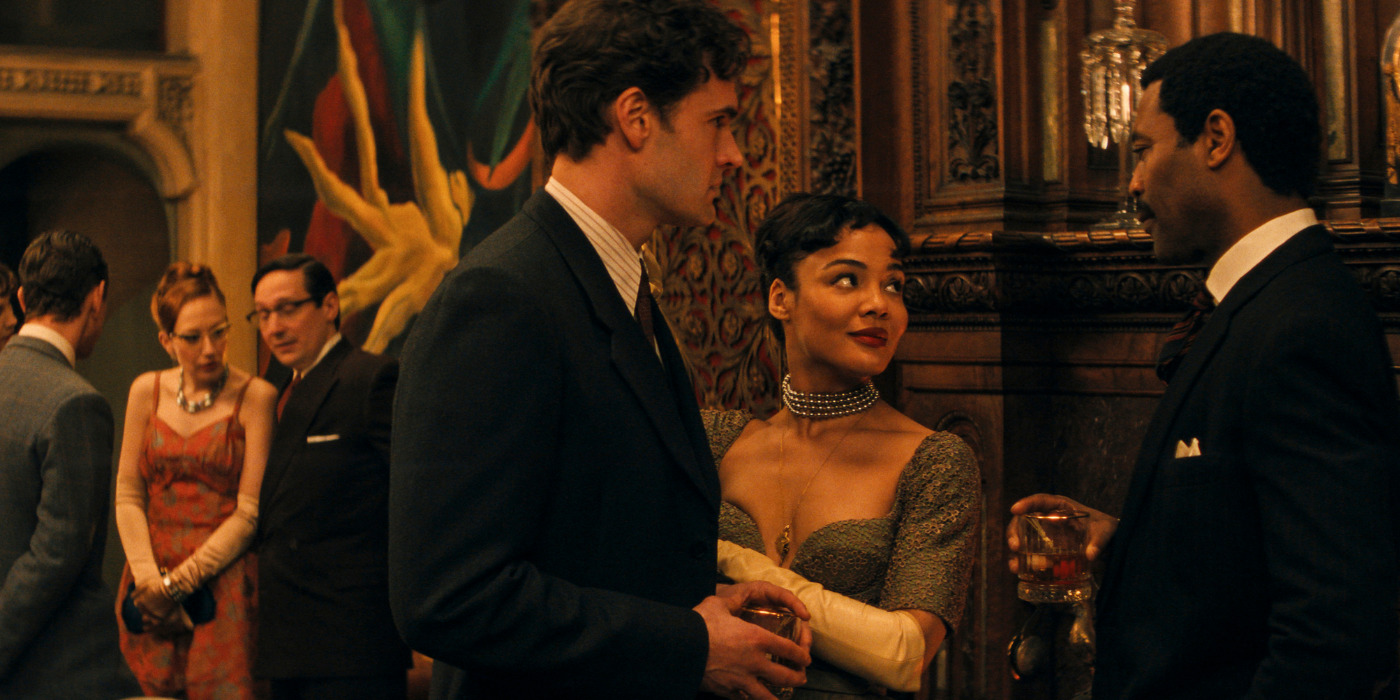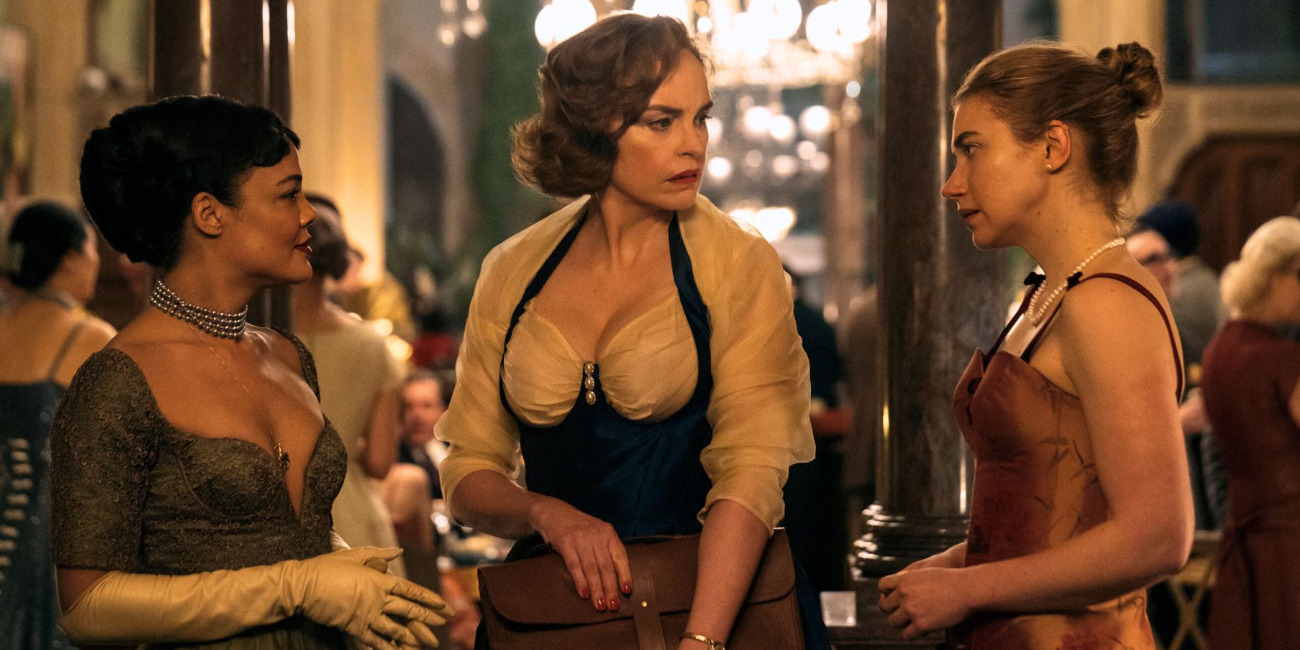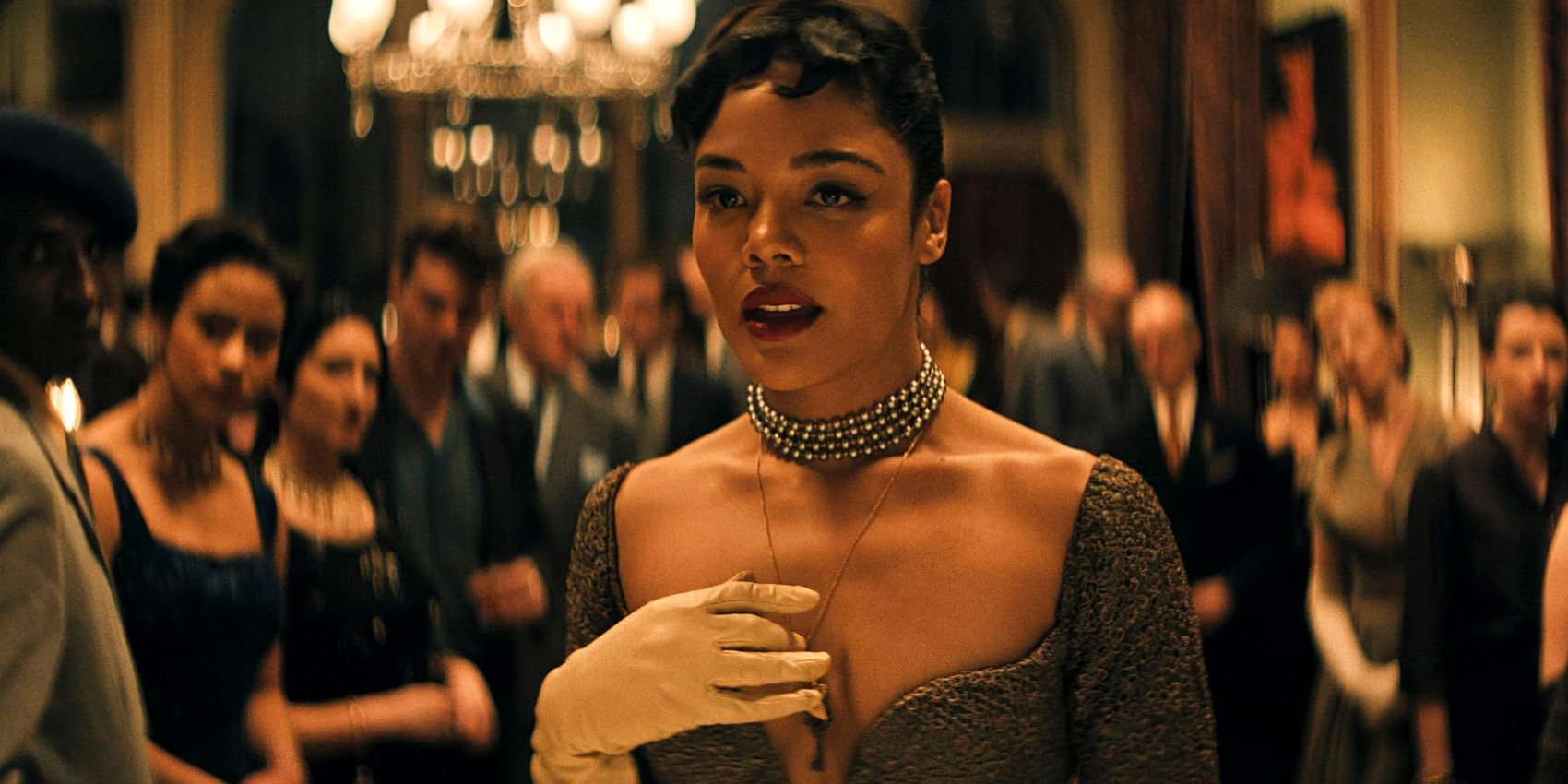Nia DaCosta’s period piece ‘Hedda‘ presents a story about the tempestuous relationship between freedom and polite society, especially for a woman in 1950s England. The Prime Video film revolves around the titular character, Hedda Tesman, née Gabler, who is hosting a grand estate party in the new, lavish house that she and her husband, George Tesman, own. However, despite all the opulence, the newlywed couple is actually struggling with their finances, particularly so in light of the estate’s purchase. Therefore, it’s pertinent that Professor Greenwood, who will be deciding whether or not to impart the professorship position to George, has a good time.
Nonetheless, things are put in peril when Eileen Lovborg, a female academic with a high regard and adulterated reputation, walks into the party, apparently up for the same job as George. Her apparent romantic past with Hedda makes matters worse, inviting the married woman to conduct an evening of manipulation and puppetry done from behind the curtains. Exploring nuanced psychologies of desire and power, paired with the themes of identity through gender, race, and sexuality, the film offers a deep dive into highly relevant and relatable topics. Thus, its root origins in real life remain worth examining.
Hedda is a Re-Imagining of Henrik Ibsen’s Play From 1891
In ‘Hedda,’ director and writer Nia DaCosta reimagines Henrik Ibsen’s highly acclaimed play ‘Hedda Gabler’ through a modern but equally nuanced lens. The Norwegian playwright’s original work, which was first staged in 1891 in the Residenztheater in Munich, Germany, tells the story of the titular heroin. The central premise of the play focuses on Hedda Gabler, who continually struggles with the suffocating reality of pursuing freedom as a woman in a deeply patriarchal society. Although her identity is oftentimes tied to her relationships with the men in her life, her General father, academic husband, or disreputable past lover, her motivations, desires, and actions are anything but.

Trapped in her unexciting, tedious marriage, Hedda finds herself manipulating the circumstances around her life in hopes of achieving an ideal outcome. Over the years, Ibsen’s play has stirred much conversation and even controversy, given its complex portrayal of a female heroin who refuses to fit into the mold of femininity and morality. Perhaps for the same reason, it has become one of the more iconic plays for actresses to step into, remaining comparable to celebrated works like ‘Hamlet.’ For DaCosta, it was this same fascination with the character that compelled her to reimagine the story for the screen.
“I thought that this character (Hedda) was terrifying, but also how brave to write a character like this, who is—to me, at least—unredeemable and does horrible things, but you’re telling it from her perspective and have huge empathy for her,” DaCosta told Vanity Fair, discussing her relationship with Ibsen’s work. Her initial fascination with the play compelled her to seek out other adaptations until she eventually realized she wanted to create a film around the play, highlighting all its comedic and dark subtext. Once the filmmaker set out to do so, it became evident to her that she would be incorporating a few changes into the narrative, allowing her project to stand out as a reimagining rather than an identical adaptation.
Nia DaCosta Adds New Elements of Socio-Political Identity Into Hedda Gabler’s Story
Early on in Nia DaCosta’s process of penning a script inspired by Henrik Ibsen’s ‘Hedda Gabler, the filmmaker knew she wanted to make a few changes to the story. The most notable and bold one was her decision to write the instrumental character, Eilert Lövborg, Hedda’s former lover and George’s current academic competition, as a woman. Thus, Eilert became Eileen, the intelligent female professor, who manages to overcome society’s prejudices about her gender through her audacious academic book about sex and pleasure. While the character gained many new nuances, it still held onto old vices, such as the professor’s tarnished reputation stemming from her inclination toward alcoholism.

Consequently, key new differences are added to the story through the addition of homosexuality in the already scandalous relationships between Lövborg, Thea, and Hedda. Similarly, the film also reimagines the titular character as a mixed-race aristocratic woman, still the daughter of a General, but an illegitimate one this time around. All these changes, paired with the decision to shift the 1891 play to the era of 1950s London decadence, bring a new nuance to an already beloved story. Lastly, another significant change DaCosta commits to stems from the decision to have the entire story unravel over the course of one night, attaching higher stakes and thrill to the narrative. Even though these changes meant introducing new themes and characterisations to Ibsen’s work, the film still strives to retain spiritual accuracy to the source material.
In a conversation with The Los Angeles Times, Tessa Thompson, who takes on the lead role, spoke about the same, in particular regard to her character. She said, “In the original piece, the source material, there is this real apprehension and fear of scandal. And so if we were going to project a Hedda that was bohemian and could dazzle at a party and could sleep with women and could have a ferocious sexual appetite, well, this is a woman that’s not afraid of scandal in the same way. And so I realized that what we were doing really was not a one-for-one and that we weren’t just changing around the furniture. I think sometimes that’s what happens in an adaptation. You’re just moving the furniture around a little. No, we’re doing a demo — we’re doing like a gut renovation.”
Read More: Hedda Ending Explained: What Does Hedda’s Smile Signify?


You must be logged in to post a comment.